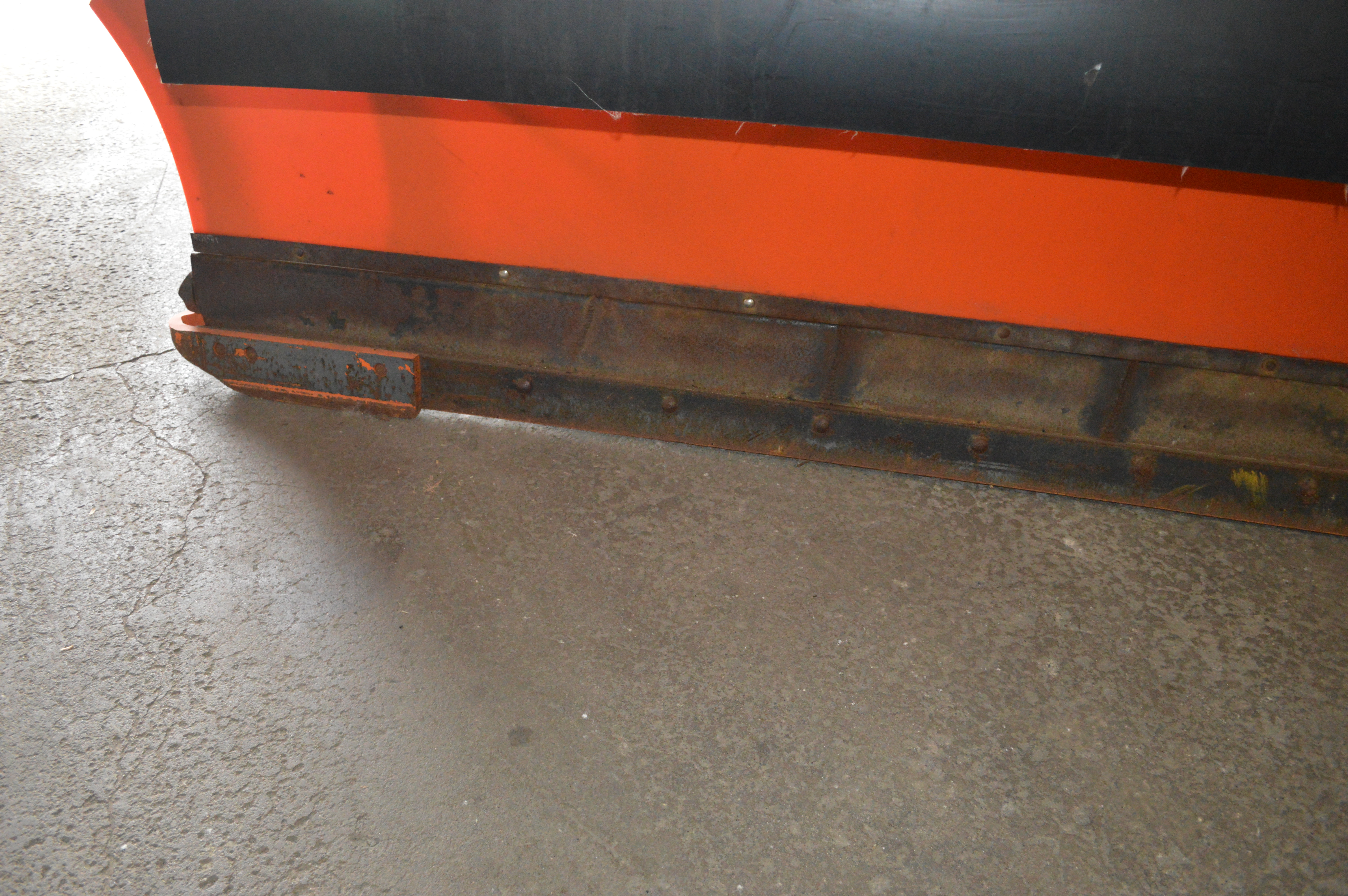Alternative Cutting Edges
Written by DRSCW member Scott Weber, Streets and Forestry Supervisor, Village of Hanover Park, for the Winter 2019 DRSCW Newsletter
Snow removal has rapidly evolved during the last ten years. At Hanover Park a primary focus has been to maintain or even improve our level of service while also reducing the amount of chlorides used. Doing all of the right things by using liquids, reducing application rates, and following materials Best Management Practices just isn’t enough anymore.

This is an old mild steel set up, showing the uneven wear causing a trailing of snow condition and sub optimal driving conditions.
We decided to look at options in cutting edges because after all, better removal equals less salt needed. The old standard carbon steel blades wear unevenly and don’t conform well to our ever changing pavement conditions. These conditions create a trailing of snow after the plow passes and requires additional passes or material used. This all costs us more money to clear the same amount of snow.
In 2015, we chose to experiment with carbide sectional cutting edges. These cutting edges are encased in rubber allowing the blade sections to float which conforms to uneven pavement, promotes better uniform wear, and better clearing of the pavement. Over the last three seasons of testing, our findings have proven that the Carbide Sectional blades have outperformed the Carbon Steel blades four to one with regards to wear rates. For material alone the break-even cost is four to one, this does not take in to account the Fleet Departments cost savings because of the reduced frequency of changing blades. Additionally, these blades greatly reduce vibration and noise levels inside the cab of the truck making a much better work environment for my operators. We noticed a noise reduction of as much as 10 decibels from the front plow and under body scraper on our trucks compared to running carbon steel blades. The greatest reduction of noise and vibrations was made in the use of the sectional Carbide system on our under body scraper, compared to front plow only. This greatly reduces the operators’ risk of fatigue and hearing damage due to exposure.
Better wear, better clearing, better conditions for our operators with less salt used seems pretty clear to us.





